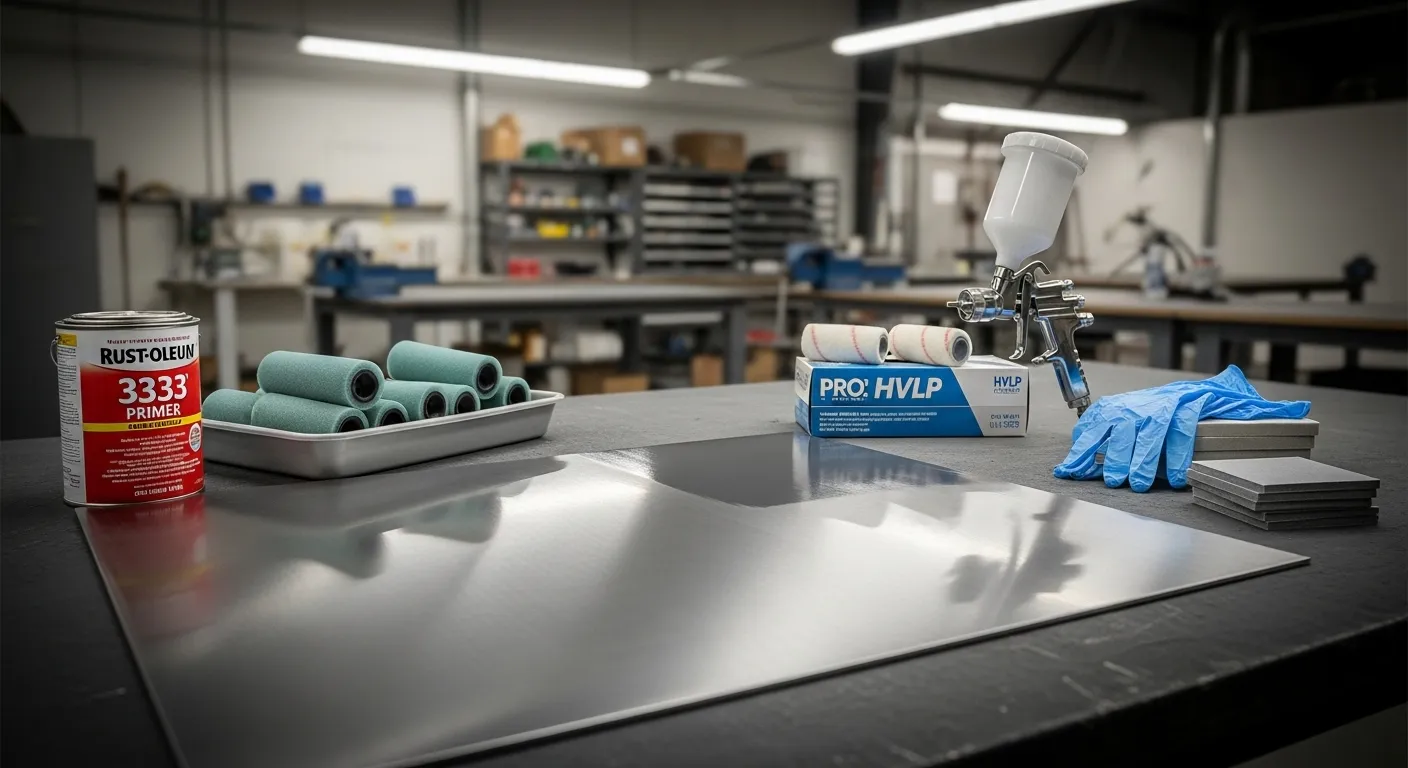
Stainless steel is sleek and durable, but sometimes it needs a fresh look or added protection. That's where paint comes in.
The best paint for stainless steel is typically a two-part epoxy or polyurethane paint, applied over a specialized bonding primer. Proper prep ensures adhesion and long-lasting performance.
If you're painting stainless steel for appearance or performance, you'll need the right process, products, and safety knowledge. Let's explore every step.
Why Paint Stainless Steel When It's Already So Durable?
A shiny stainless steel surface resists rust. But painting it can solve more problems than you think.
Painting stainless steel improves its UV, chemical, and wear resistance. It also allows for color customization, fingerprint protection, and brand enhancement.
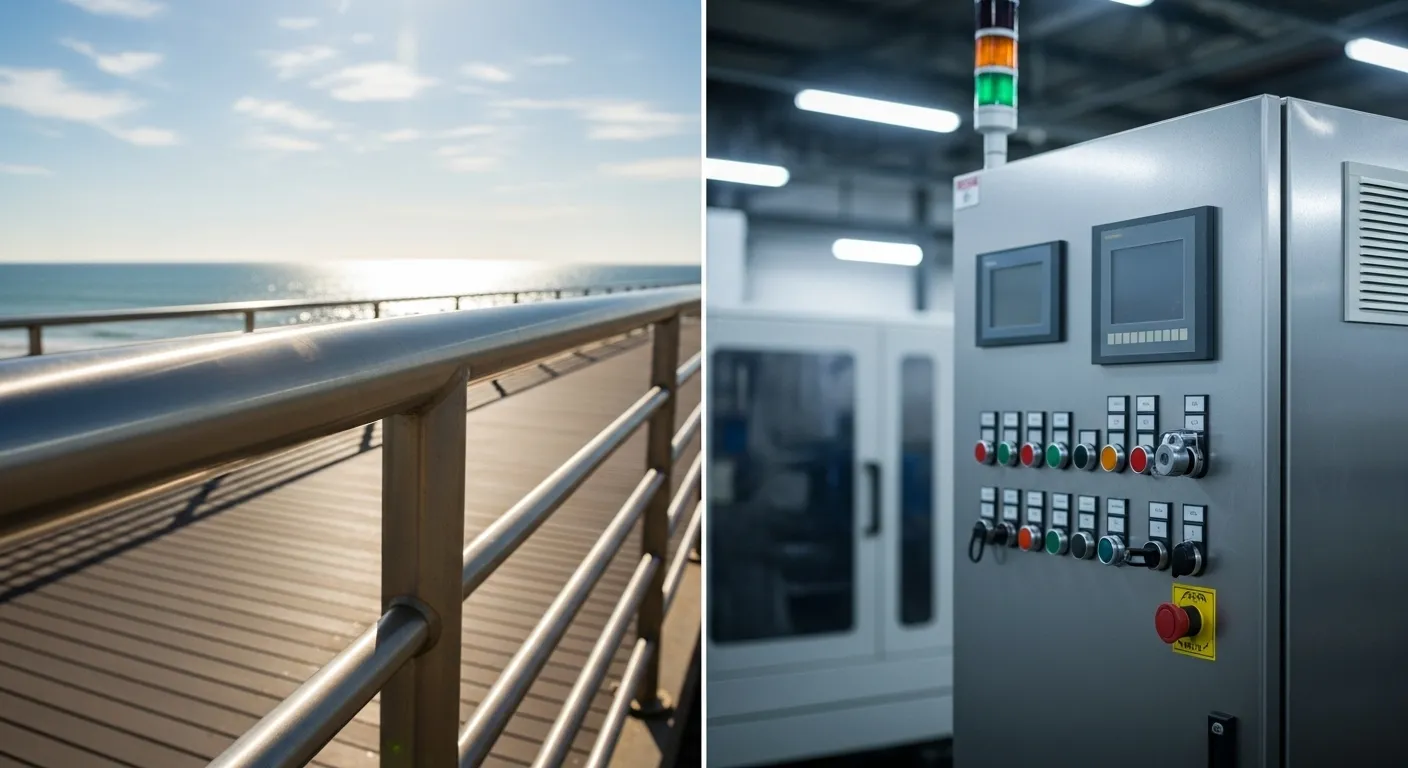
When Painting Stainless Steel Makes Sense
- Branding: I once worked with a client who wanted to match his company's colors on a line of promotional tumblers. Painting made that possible.
- High-Traffic Protection: Painted layers add resistance to scratches, fingerprints, and acid spills.
- Outdoor Use: In coastal or industrial zones, stainless still corrodes. Paint creates an extra barrier.
"Uncoated stainless steel lasts 5 years outdoors. Painted stainless can last 10+ years in the same setting." — Corrosion Engineering Handbook
Considerations Before You Paint
- Painting voids the protective chromium oxide layer1.
- It requires proper preparation.
- In food or high-heat environments, only certified products are safe.
How Do You Prepare Stainless Steel for Flawless Paint Adhesion?
Most paint jobs fail because of poor surface prep. That's especially true for stainless steel.
Surface preparation involves degreasing, abrasion, and dust removal. Without these steps, paint peels within weeks.
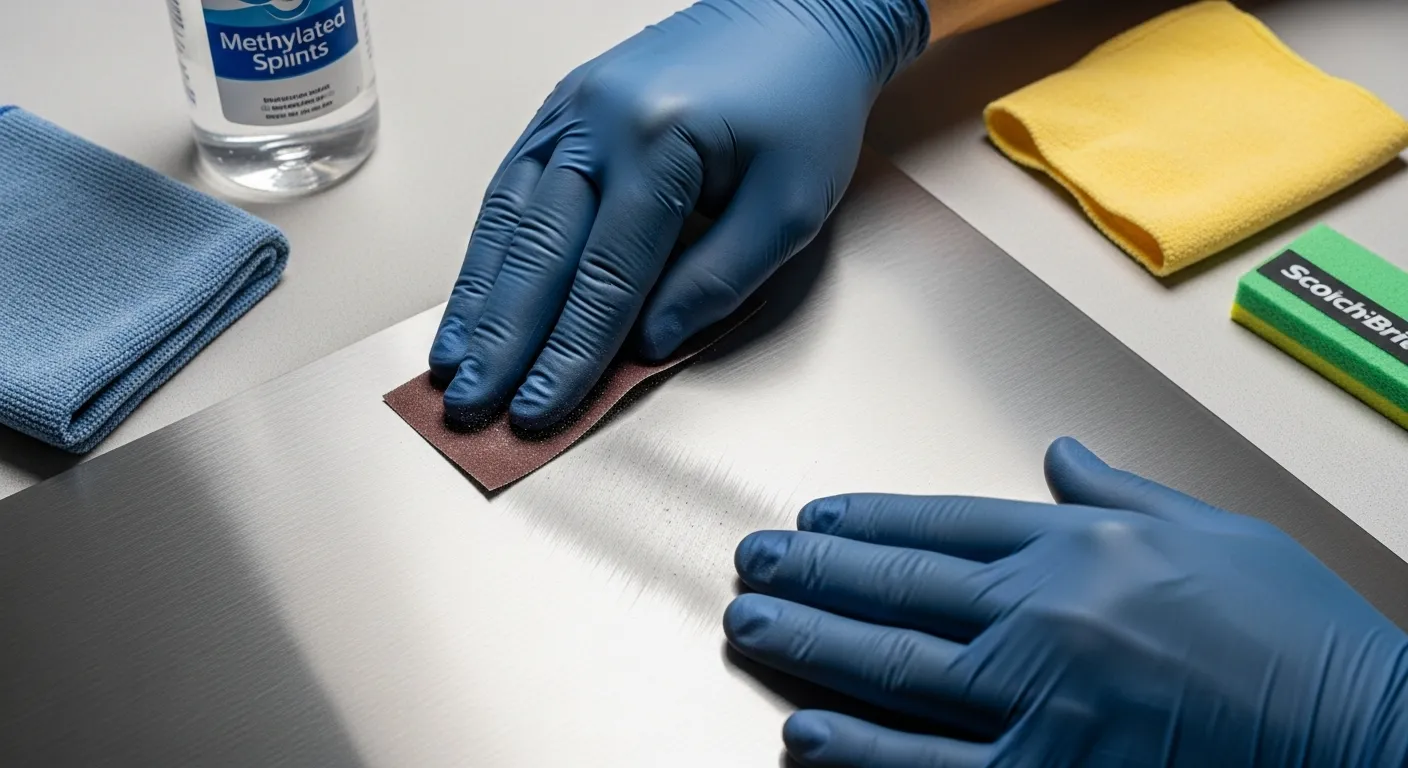
3 Steps for a Perfect Base
| Step | Tool/Product | Goal |
|---|---|---|
| Degrease | Methylated spirits or Simple Green | Remove oils and residues |
| Abrade | 100–120 grit sandpaper or Scotch-Brite pad | Roughen surface for adhesion |
| Dust Removal | Tack cloth | Ensure clean application |
DIY vs. Pro Prep
- DIY: Red Scotch-Brite pads won't damage the surface but give enough grip for bonding primers.
- Pro: SSPC-SP-10 shot blasting2 triples adhesion strength but requires equipment.
Pro Tips
- Never use steel wool—it contaminates the surface.
- Avoid prep in humid or dusty environments.
- Always test on a hidden area before starting.
What's the Best Primer to Ensure Your Paint Sticks Long-Term?
A good primer makes or breaks the paint bond—especially on smooth metals like stainless steel.
Self-etching primers3 or bonding epoxies create micro-anchors for paint to grip. Rust-Oleum 3333 is a top-rated option for stainless steel.
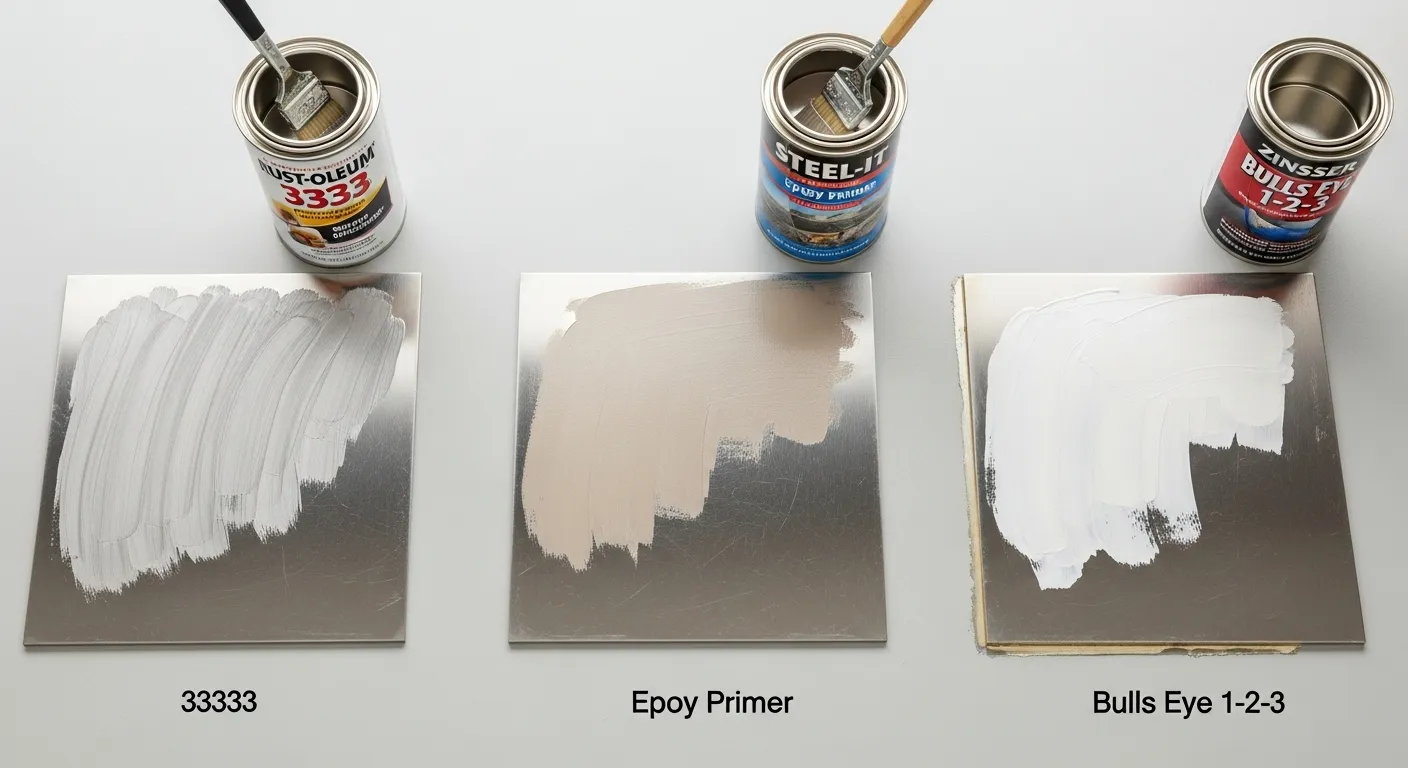
Top Primer Choices
| Primer | Type | Dry Time | Notable Feature |
|---|---|---|---|
| Rust-Oleum 3333 | 2K Epoxy | 4 hours | Bonds without blasting |
| STEEL-IT 4210 | Epoxy | 6 hours | USDA food-safe |
| Zinsser Bulls Eye 1-2-3 | Acrylic | 1 hour | Quick-dry for small projects |
What I've Learned
I once skipped primer on a bottle sample. The paint looked fine at first. But within 10 days, it flaked around the curved edges. Lesson learned.
Key Considerations
- Always check the temperature range (ideally 50°F to 85°F).
- Use 2 light coats instead of 1 thick one.
- Let it fully cure before painting—don't rush.
Which Paint Types Deliver the Strongest, Most Vibrant Finish on Stainless Steel?
Not all paints stick to stainless. And even fewer last long.
Two-part epoxy4 and polyurethane paints5 offer the highest adhesion and durability. Acrylics work but wear faster.
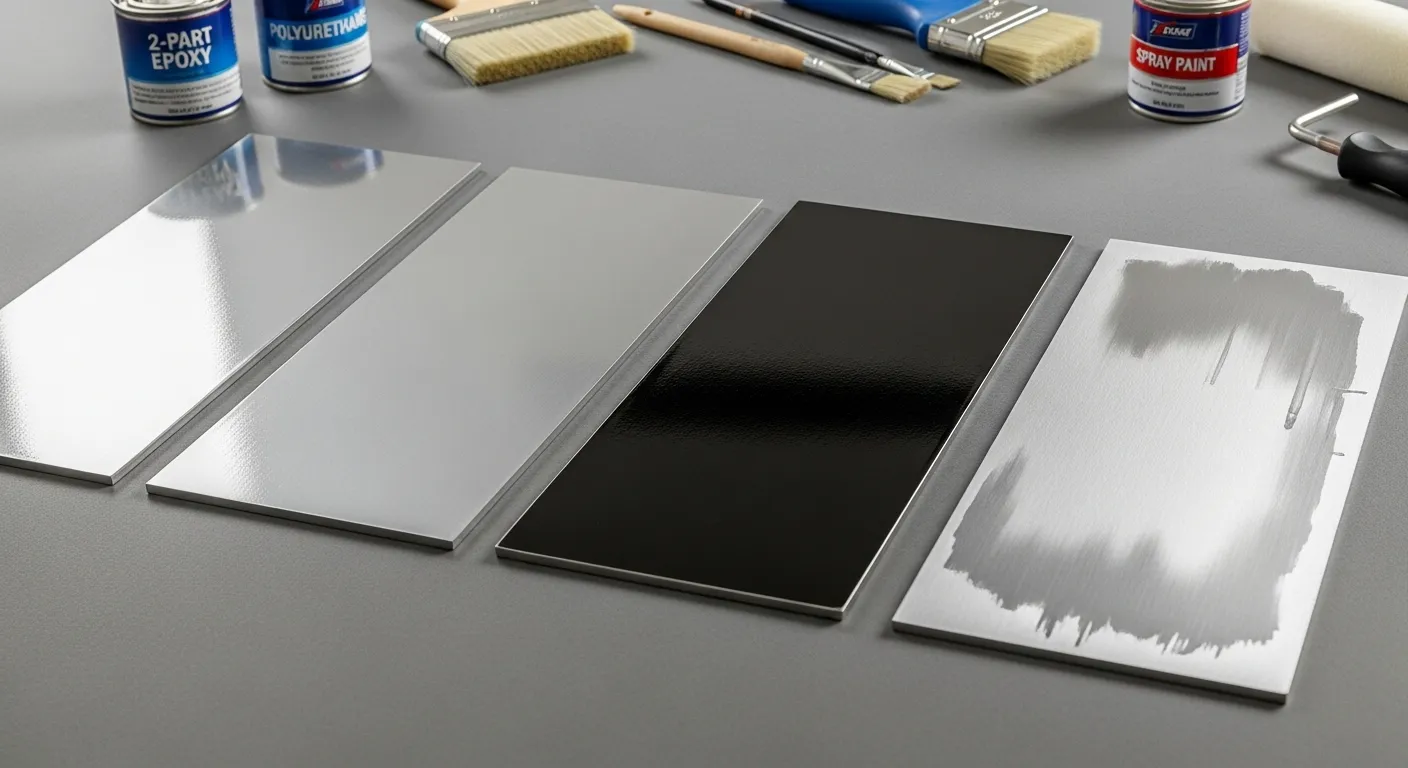
Paint Type Comparison
| Paint Type | Durability | Use Case | Finish |
|---|---|---|---|
| 2-Part Epoxy | 10+ years | Industrial, kitchen tools | Gloss/semi-gloss |
| Acrylic Enamel | 2–3 years | DIY, home decor | Gloss/matte |
| Polyurethane | 7–10 years | Outdoor, UV exposed | High gloss |
| Spray Paint | 1–2 years | Temporary projects | Variable |
What I Recommend
- For high-contact items (e.g., tumblers), go epoxy.
- For signage or decorative use, acrylic may suffice.
- For food zones, use USDA-approved epoxy like STEEL-IT #4907.
How Should You Apply Paint to Stainless Steel for a Pro-Level Result?
Even the best paint fails if it's applied poorly.
Apply thin, even coats using a sprayer or synthetic brush. Allow proper drying time between each layer.

Step-by-Step Guide
- Prep Surface (see earlier)
- Apply Primer: 1–2 thin coats
- Mix Paint: Follow manufacturer instructions (some require thinning)
- Apply Paint: Use HVLP sprayer or soft synthetic brush
- Dry and Cure: 24–72 hours depending on paint type
"Spraying gives a uniform coat, especially on curves. Brushing may leave streaks unless thinned." — PaintTech Journal
My Tools of Choice
- HVLP sprayer for large or curved items
- Foam roller for flat panels
- Heat gun (low) to speed up drying in cold weather
Mistakes to Avoid
- Overloading brush = drips
- Painting in humidity = bubbles
- Skipping primer = instant regret
Can You Find Food-Safe Paints for Stainless Steel in Kitchens or Food Prep Areas?
Safety matters when painting anything that might touch food.
Some epoxy paints, like STEEL-IT #4907, meet USDA and FDA guidelines for incidental food contact on stainless steel.
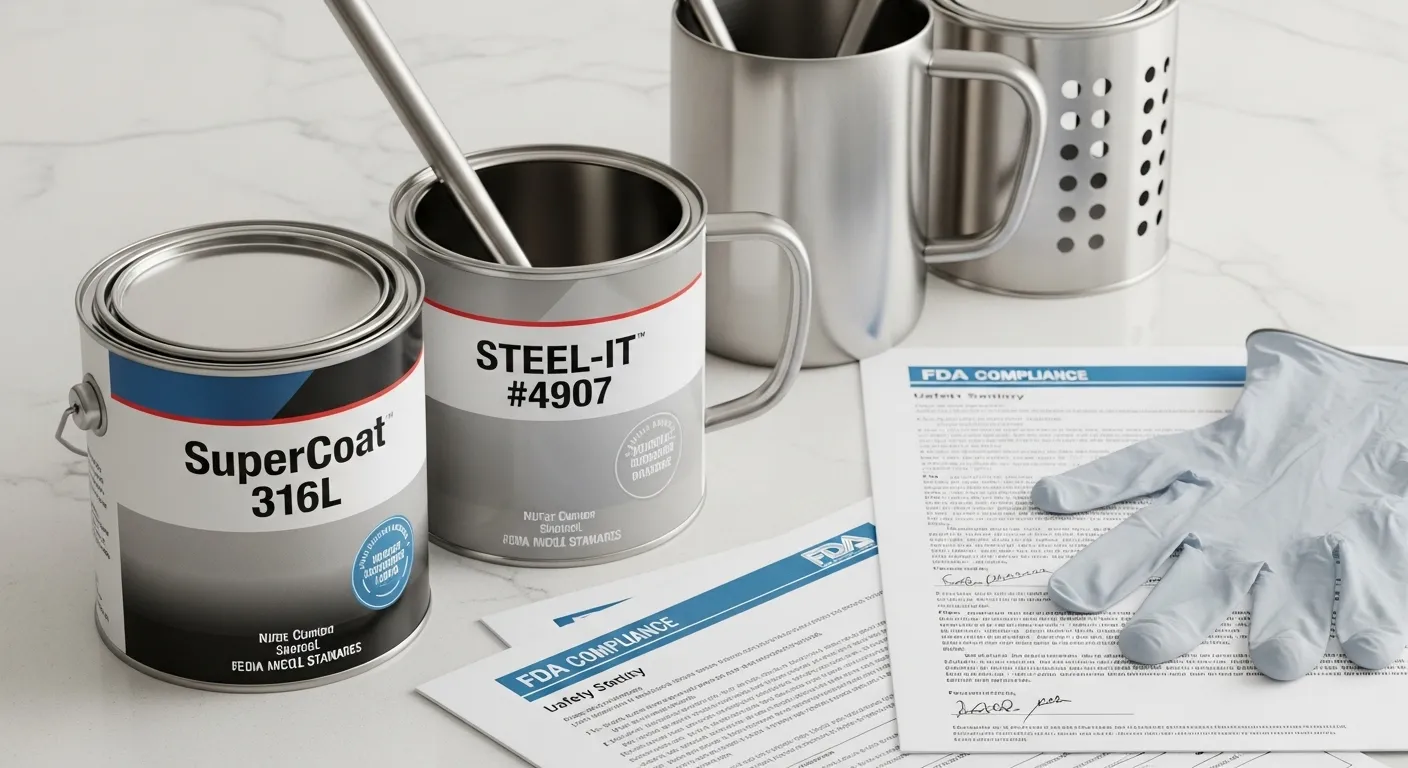
What Makes a Paint Food-Safe?
- Certified under FDA 21 CFR 175.3006
- Free from lead, heavy metals, and solvent residue
- Cured fully (usually 7 days)
Approved Options
| Product | Type | Use Case | Compliance |
|---|---|---|---|
| STEEL-IT 4907 | Epoxy | Tools, appliances | USDA, FDA compliant |
| SuperCoat 316L | Aerosol | Counters, containers | Industrial use |
| Food-Safe DTM | Urethane | Processing machines | Specialty order |
Caution: Never use paint unless the manufacturer confirms food safety standards. Curing fully is also critical.
Where It Matters
- Coffee mugs
- Water bottles
- Kitchen appliances
- Food processing equipment
What Paints Work Best for Outdoor or Harsh-Environment Stainless Steel?
Outdoor stainless needs armor—paint that can handle sun, salt, and storms.
Epoxy-polyurethane combos or UV-stable coatings7 work best. Some resist fading for over 1,000 UV hours.
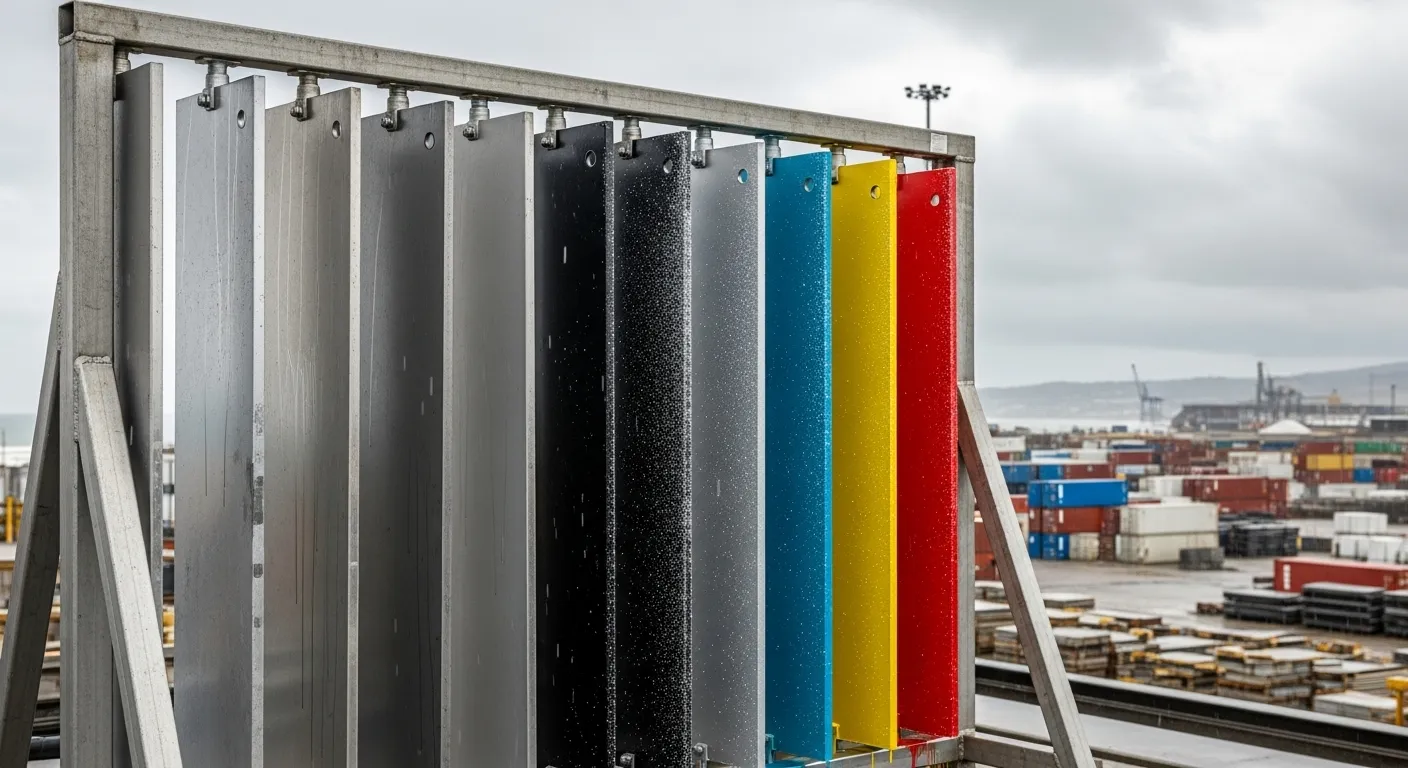
Harsh Environment Recommendations
| Paint | Resistance Type | Expected Lifespan |
|---|---|---|
| Kolorbond K2 | UV, Moisture | 10 years |
| Seymour Stainless-Blast | Salt Spray | 5–7 years |
| Rust-Oleum Marine Epoxy | Water, Humidity | 3–5 years |
Why I Trust Polyurethane
When we painted stainless components for a Vietnam-based customer, the polyurethane topcoat held up to coastal air better than epoxy alone.
Additional Protection
- Add a clear polyurethane topcoat for UV stability.
- Avoid flat paints—they absorb more heat and fade faster.
- Look for coatings with nano-ceramic or anti-corrosion additives.
Conclusion
Choose the right paint and prep carefully—painted stainless steel can be strong, stylish, and safe for years to come.
FAQs
Can you paint stainless steel without sanding?
Yes, but only with a self-etching primer like Rust-Oleum 3333 that bonds to smooth surfaces.
What's the easiest paint for beginners?
Acrylic spray paint is easiest to apply but less durable. Use on non-functional decor pieces.
Is epoxy paint dishwasher safe?
No. Even food-safe epoxies are not rated for repeated high-heat, high-moisture cycles like dishwashers.
How do you protect painted stainless steel from scratching?
Add a clear topcoat and avoid abrasive cleaning tools. For bottles, consider vinyl wrapping under the clear layer.
What's the best paint for stainless steel bottles?
Use a food-safe epoxy like STEEL-IT with a polyurethane topcoat. Cure completely before use.
-
The chromium oxide layer on stainless steel forms instantly when chromium reacts with oxygen, creating a microscopic protective barrier that gives stainless steel its corrosion resistance. This self-healing layer is only a few nanometers thick but provides exceptional protection against rust. ↩
-
SSPC-SP-10 (Near-White Metal Blast Cleaning) is an industrial standard that specifies surface preparation achieving 95% cleanliness through abrasive blasting. This professional method removes nearly all visible contaminants and creates optimal surface profile for paint adhesion. ↩
-
Self-etching primers contain phosphoric acid and zinc particles that chemically etch metal surfaces while depositing zinc. This creates a rough texture with micro-anchors that dramatically improve paint adhesion without requiring manual sanding. ↩
-
Two-part epoxy coatings consist of resin and hardener that chemically react to form an extremely durable plastic coating. When properly applied and maintained, epoxy can last 10-20 years in industrial applications and even longer in residential settings. ↩
-
Polyurethane paints feature highly cross-linked chemical structures with large molecular weight, creating tough, flexible coatings with exceptional UV resistance. Their molecular structure allows them to absorb and dissipate UV radiation, preventing color fading and surface degradation. ↩
-
FDA 21 CFR 175.300 is the federal regulation governing resinous and polymeric coatings intended for food contact surfaces. It specifies approved substances, migration limits (typically 0.5 mg per square inch), and testing requirements for coatings used in food production, packaging, and preparation. ↩
-
UV-stable polyurethane coatings are specifically formulated with aliphatic isocyanates and UV absorbers that convert harmful UV radiation into heat. These coatings maintain color stability and resist chalking for extended periods, making them ideal for outdoor stainless steel exposed to harsh sunlight and weather conditions. ↩

